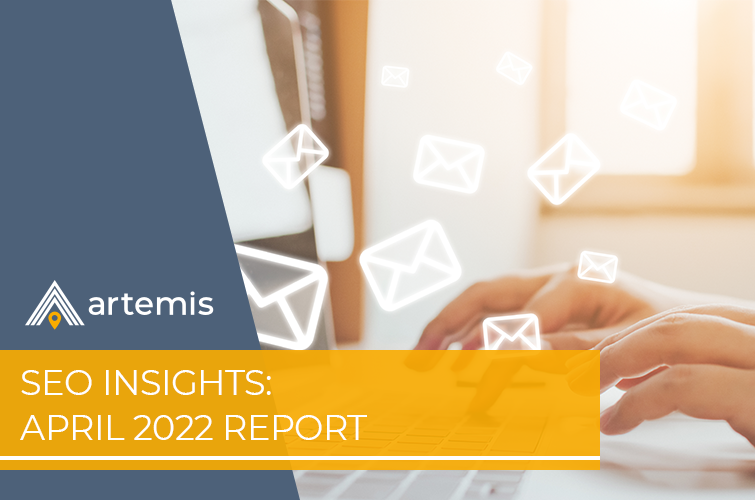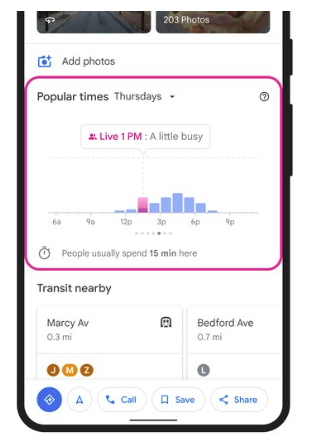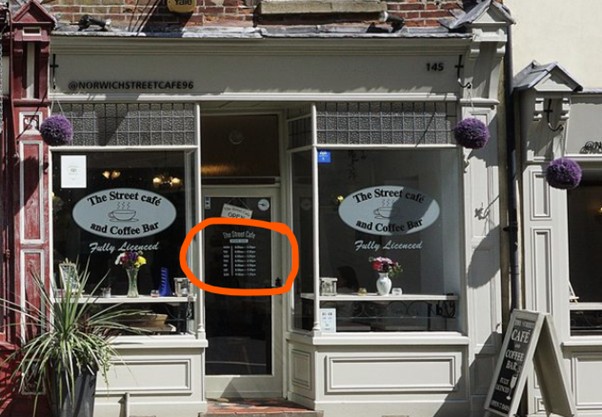SEO Insights: April 2022 Report

SpamBrain
Google seems to have a habit of picking some very suspect names for its algorithms and the latest name to emerge from the Googleplex is SpamBrain!
You may have previously heard of RankBrain, which is one of Google’s AI based ranking algorithms, but now we have SpamBrain too which is Google’s AI algorithm targeting…you guessed it: spam.
Although SpamBrain has been in operation since 2018, the name and some details of this algorithm have only recently been mentioned for the first time in Google’s annual spam report for 2021.
With an estimated half a million new websites created every day, monitoring the quality of all the new and existing content, and keeping low quality and spam pages out of the search results is a mammoth task.
Using AI, Google is able to significantly scale its spam detection and learning techniques, ensuring that the search results remain relevant, useful and safe the majority of the time.
Google reported that in 2021 it was able to identify six times more spam sites than in 2020. That’s a lot less hacked spam and low quality, gibberish pages that we don’t need to see when searching. I think with the impressive work that SpamBrain is doing, we can probably forgive it its dreadful name.
Google is watching your business
Have you recently Googled a business to check their opening hours? It’s actually a very common activity and ensuring that businesses keep their opening hours updated in their Google Business Profile (GBP) listings is not a straight forward task for a search engine.
However, as always, Google has been applying its AI in conjunction with mobile phone data and Google Maps Street View imagery to help businesses maintain up-to-date opening hours in search.
When you Google a business you will often see a graphic showing you a live view of how busy it is at that location, for example:

Have you ever wondered how Google knows this? It uses mobile phone data to track visits to locations. If you have an Android phone then it’s likely that it’s sending these signals back to Google and that’s how it knows if a location is busy or not. It uses the same data to understand traffic volumes on the roads.
You may now be concerned about data privacy here, but we’ll go into that another day!
This location data is being used by Google to also understand if a business’s opening hours are correct. For example, if it sees that a business is busy at 6pm on a Friday but the opening hours on the GBP listing state that the business closes at 5pm then it’s likely that the listing is incorrect and out-of-date.
Additionally, Google will use images it records for Street View on Google Maps to detect any visible opening hours and use that information to also then compare with that is stated in GBP.

And if that’s not enough still, Google has begun using its Duplex Conversational Technology to call businesses to ask them to verify their opening hours. This “caller” is not a human but a very human-like automatic computer system that can have a perfectly reasonable conversation with a human.
This allows Google to make millions of phone calls automatically to get the latest details from businesses in bulk. It is being rolled out across several countries at the moment but not the UK just yet.
So, if you do get a phone call from someone who has an avid interest in what times your business is open and closed each day it may just be Google checking in on you. There is nothing to worry about, not until it starts calling you at home too!
Brand mentions and links
The internet is a network of websites. Links between them are what make it work and links make websites rank higher. But what if a brand is mentioned on a page but it doesn’t actually link to the brand’s website? Does that mention count for anything? Does Google see this mention as a positive thing for the website and it’s then considered as part of the link profile of the website to help it to rank higher?
This is a topic that’s been discuss at length over the years in the SEO community with some believing that Google does see them as some sort of “link” whilst others say that if it’s not a link it’s just text and it can’t help the brand website to rank higher. At Artemis we’ve always assumed the latter.
In a recent Google SEO Office Hours hangout, Google engineer, John Mueller, was asked this question answered saying that essentially a mention is not a link.
Here is his response:
“I mean… First of all, if there’s no link to your pages then it’s not really a link there.
So it’s not something that we would see, kind of like, oh it’s a half link worth of mention or something like that.
It’s essentially, there is no link, so there is no signal passing like there would be with any normal link there. So that’s, I think kind of, the first thing to keep in mind.
That doesn’t mean that… kind of… these mentions are bad or that you need to avoid them or anything like that. It’s really just, we don’t treat these as links.
And that’s about it.
And it’s something where maybe users will pick that mention and they will search for your site and they go to your site anyway.
But it’s not a link to your site. So from that point of view, it’s very different.
I wouldn’t put them into the same category.”
This is what we have always assumed although we do suspect that mentions are being used in other ways, maybe in terms of relevancy.
Links are taken into account for authority and relevancy, whilst content is used to determine context and relevancy.
For example, if a website mentions Artemis Marketing (without a link) and next to it mentions “best SEO cakes in Sussex”, then it’s possible that this association could help the Artemis website rank for “best SEO cakes in Sussex”.
We’ll test this out and report back, just don’t ask us for any SEO cakes!

